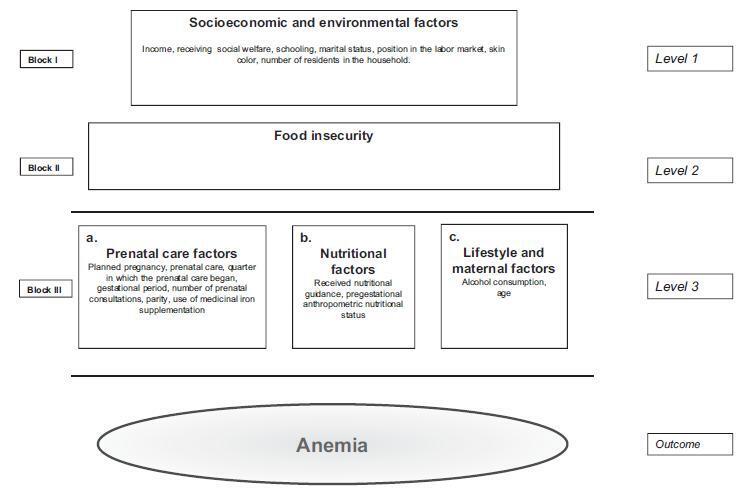-
Original Article
Food Insecurity, Prenatal Care and Other Anemia Determinants in Pregnant Women from the NISAMI Cohort, Brazil: Hierarchical Model Concept
Revista Brasileira de Ginecologia e Obstetrícia. 2017;39(8):384-396
08-01-2017
Summary
Original ArticleFood Insecurity, Prenatal Care and Other Anemia Determinants in Pregnant Women from the NISAMI Cohort, Brazil: Hierarchical Model Concept
Revista Brasileira de Ginecologia e Obstetrícia. 2017;39(8):384-396
08-01-2017Views136See moreAbstract
Objective
To identify the prevalence of anemia and its relation to food insecurity (FI) and other determinants in pregnant women.
Methods
A cross-sectional, cohort-nested study, with the participation of 245 pregnant women who were cared for at Family Health Units in the municipality of Santo Antônio de Jesus, Bahia, Brazil. The participants underwent blood tests for hemoglobin levels, anthropometric examinations, and answered a structured questionnaire. The hemoglobin (Hb) parameter (Hb < 11 g/dL) was used for the classification of the diagnosis of anemia. Food insecurity was evaluated using the North American short-scale food insecurity assessment. Logistic regression was adopted for the statistical analyses, based on a hierarchical conceptual model that enabled the measurement of the decomposition of the total effect of its non-mediated and mediated components using the proposed hierarchical levels.
Results
The prevalence of anemia in the studied population was of 21.8%, and the average hemoglobin was 12.06 g/dL (standard deviation [SD]: 1.27). Food insecurity was identified in 28.16% of the pregnant women. The average maternal age was 25.82 years (SD: 5.94). After ranking, the variables positively associated with anemia remained significant: FI (odds ratio [OR] =3.63; 95% confidence interval [95%CI]: 1.77-7.45); not undergoing prenatal care (OR = 5.15;95%CI: 1.43-18.50); multiparity (OR = 2.27;95%CI: 1.02-5.05); and non-supplementation of iron medication (OR = 2.45; 95%CI: 1.04-5.76). The results also indicated that the socioeconomic and environmental factors were largely mediated by food insecurity and factors regarding prenatal care.
Conclusions
In the present study, the chance of occurrence of anemia in pregnant women was significantly higher,mainly among women: in situations of food insecurity, not undergoing prenatal care, not having received iron supplements, and who are multiparous.



